The beautiful Baphuon, a three-tiered sandstone temple mountain built as the state temple of Udayadityavarman II and dedicated to the Hindu God Shiva, symbolically represents the sacred, 5-peaked Mt. Meru important in both Hindu and Buddhist cosmology. Probably among the most impressive of the Angkor temples in its day, this temple is located approximately 200 m. northwest of the Bayon.
Check out “Bayon Temple“
It was built in the mid-11th century (before the city of Angkor Thom was established) and is the archetype of the Baphuon style of design, with beautiful, intricate carvings covering every available surface including both realistic and fanciful depictions of lotus flowers, wild animals and hunters, devata figures, men in battle as well as carvings with indirect references to Hindu mythology and scenes illustrating epic poems such as the Ramayana.
Baphuon is part of the Angkor Small Circuit which takes you to all the “must-see” temples within the enormous Angkor Archaeological Park. There are three enclosures in the Baphuon temple complex. The pyramid-style temple, situated on a high base adjoining the southern enclosure of the royal palace, measures 120 m. east-west by 100 m. north-south at its base and stands 34 m. tall without its original tower (which would have made it roughly 50 m. tall).
In the late 15th century, the Baphuon was converted into a Buddhist temple and a 9 m. tall by 70 m. long statue (one of the largest in Southeast Asia) of a reclining Buddha was built on the west side’s second level. To supply stones for the statue, this probably required the demolition of the 8 m. high bronze tower above (thus explaining its current absence).
Throughout its history, the temple’s site was unstable due to its immense size and it being built on land filled with sandy soil. By the time the Buddha was added, large portions had probably already collapsed. Surrounded by a 125 by 425 m. wall, the central tower was probably gilded wood, which has not survived.
This magnificent temple was very nearly lost to history as the ravages of time have caused significant damage. By the 20th century, much of the temple had largely collapsed. Restoration efforts took on an epic quality and the tale of how it was restored is just as impressive as the structure itself. A large-scale project entailing a process known as anastylosis was proposed wherein the temple was dismantled so that its core could be reinforced before the whole is re-constructed again.
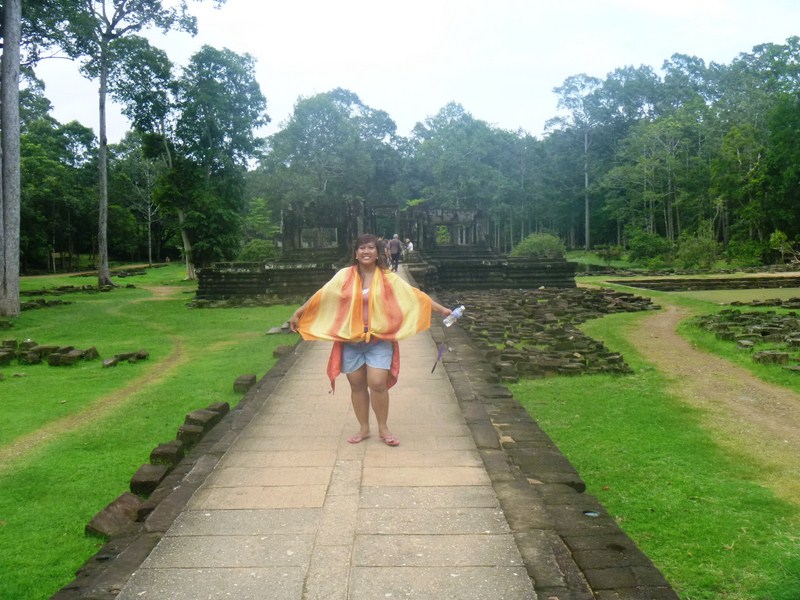
Violet making her way along the walkway. In the background is the pavilion at the middle of the walkway
In 1970, civil war broke out and the project was abandoned. About 300,000 carefully labeled and numbered blocks, organized across 10 hectares surrounding the temple, were abandoned after the workers and archaeologists were forced to leave and, during the decade of conflict and the Khmer Rouge that followed, the plans identifying the pieces were destroyed by the Khmer Rouge and lost.
In 1996, under the guidance of architect Pascal Royère from the EFEO, a second project to restore the temple, called the “largest 3D jigsaw puzzle in the world,” was launched. Modern technology greatly aided in the process but it still took the team 16 years to complete. The lighter colored stones are the restored pieces.
After 51 years of work, the restoration was completed in April 2011 and the temple formally re-opened. On July 3, 2011, the temple was inaugurated with King Norodom Sihamoni of Cambodia and Prime Minister Francois Fillon of France among those who first toured the renovated temple.
We approached the temple from the east via a 225 m. long, elevated sandstone walkway. After passing through a pavilion about halfway along the walkway, we caught sight of the main temple. Next, we had a bit of a workout as we climbed the steep wooden stairs that lead us up to a terrace.
As we visited Baphuon in the early afternoon, there is no shade available on the long walkway and the steep climb to the top was very taxing during this hottest part of the day. However, upon reaching the summit top, we had one of the best spectacular views of the Angkor Archaeological Park and the city of Angkor Thom. We are truly fortunate to have been able to visit this remarkable site.
Baphuon Temple: Angkor Thom, Angkor, Cambodia. Tel: +855 63 765 577. Visit Baphuon in the morning or late afternoon as there is no shade available on the long walkway. Hiring a tuk-tuk driver to take you around the Angkor complex is an inexpensive way to efficiently cover more ground and make sure you don’t miss anything in this complex.

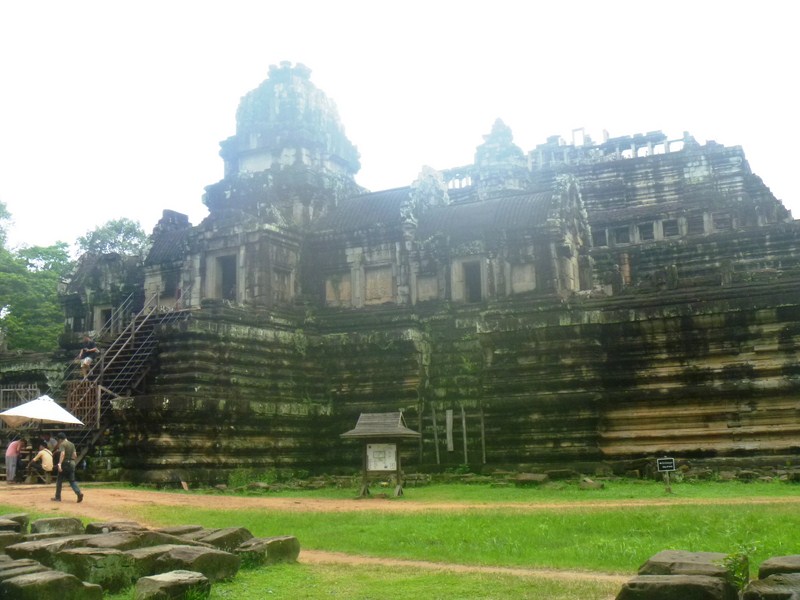
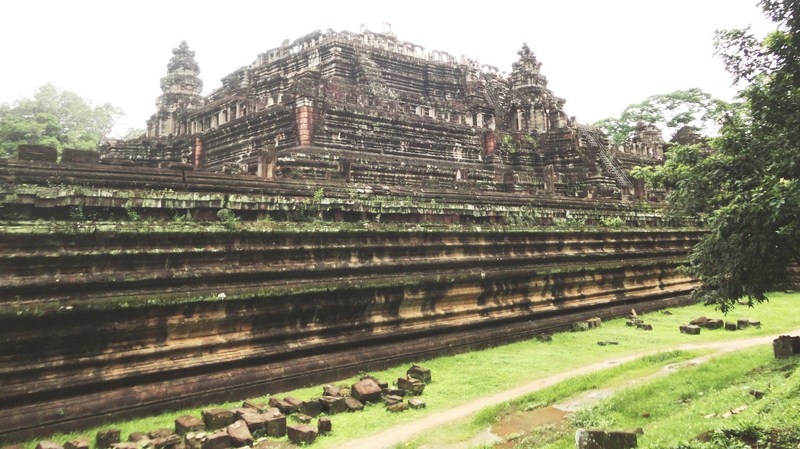
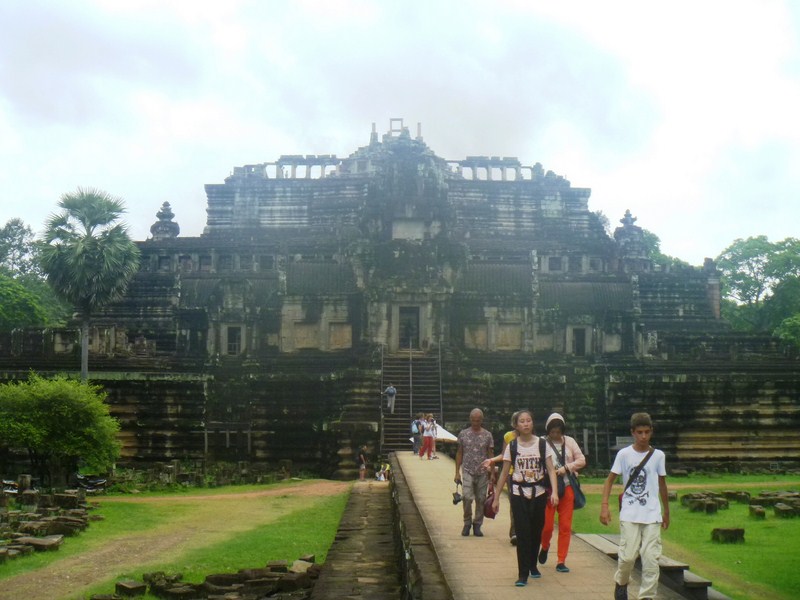
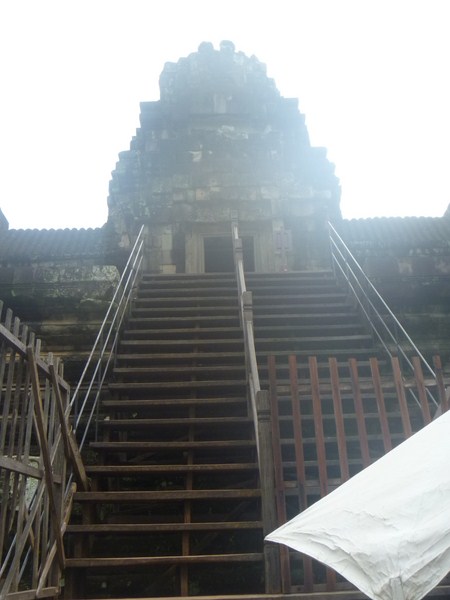
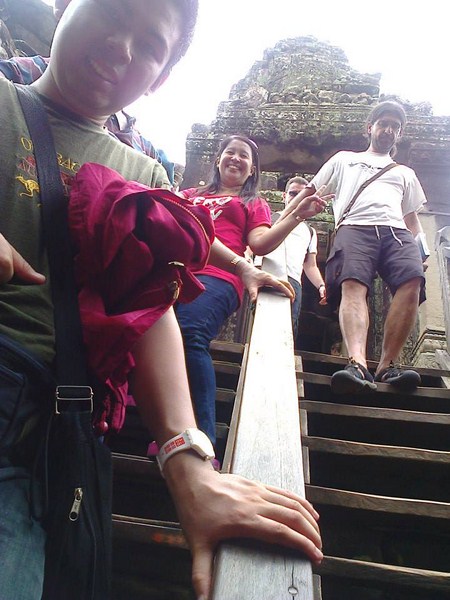
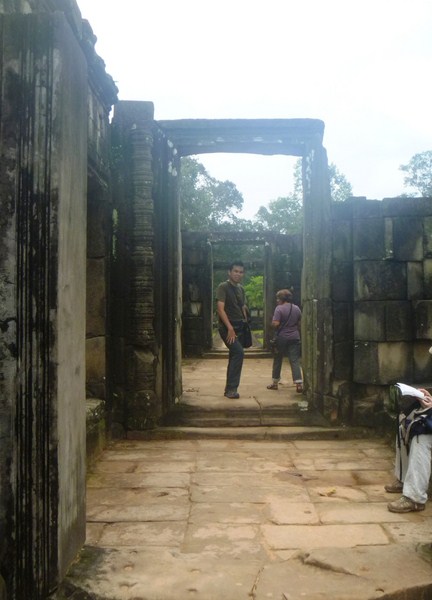
Pingback: Angkor Wat (Siem Reap, Cambodia) – B.L.A.S.T. – Live Life to the Fullest ……… Don't Stay Put
Pingback: Royal Palace and Phimeanakas Temple – B.L.A.S.T. – Live Life to the Fullest ……… Don't Stay Put
Pingback: Angkor Archaeological Park (Siem Reap, Cambodia) – B.L.A.S.T. – Live Life to the Fullest ……… Don't Stay Put